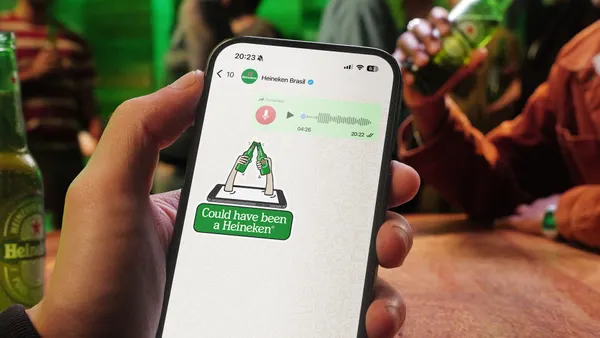Brief:
- Chinese tech giants Alibaba and Tencent are driving the adoption of mobile payments in the country, pushing aside banks for a growing role in everyday commerce, per The Wall Street Journal. China's total mobile payments more than quadrupled to $9 trillion in 2016 from the prior year, iResearch Consulting Group estimated. That dwarfs the 40% growth to $112 billion spent in the U.S., as measured by Forrester Research.
- Not only do Alibaba and Tencent collect a slice of each mobile payment from merchants, usually 0.6%, they also glean vast amounts of consumer data that guide them in transforming their apps into marketing platforms for other services. Financial services companies are also offering loans, investments and other products through smartphones as well.
- The growth in mobile payments means that Chinese consumers are using cash less frequently. The use of coins and paper bills fell 10% to 66 trillion yuan ($10 trillion) in 2016 from two years earlier, according to data from the People's Bank of China.
Insight:
China's rapid adoption of mobile payments hints at major shifts in how consumer spending patterns are impacted by the near-saturation of smartphones. The country has leapfrogged past the U.S. in the adoption of mobile payments, and much of that difference can be attributed to the role that banks have in country. The U.S. has a longer history of making electronic payment methods like credit and debit cards easier for merchants and customers to process transactions, but mobile wallets have been slower to take off in Western countries.
In China, credit cards didn't gain much popularity among people with little discretionary spending, although the country's growing middle class is driving a shift toward mass consumption similar to mature markets of developed regions. China traditionally has had a cultural aversion to debt, while government restrictions prevented Visa and Mastercard from entering the country earlier. Alibaba helped to pioneer mobile payments in China after setting up a system similar to PayPal in the U.S. that evolved into other services to provide more seamless financial transactions and functions for consumers.
While U.S. banks and tech firms like Apple, Google, Samsung and PayPal have each developed mobile payment platforms, consumers have been slow to adopt them. Only 19% of iPhone users have tried Apple Pay at least once, according to an estimate by VC firm Loup Ventures, while about 35% of all new iPhones sold in 2017 have activated the mobile payment feature. However, Apple said last year that active users of Apple Pay more than doubled, and annual transactions have risen threefold, the Journal reported.












